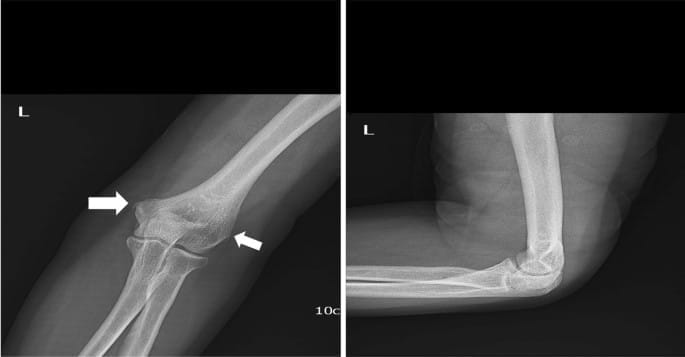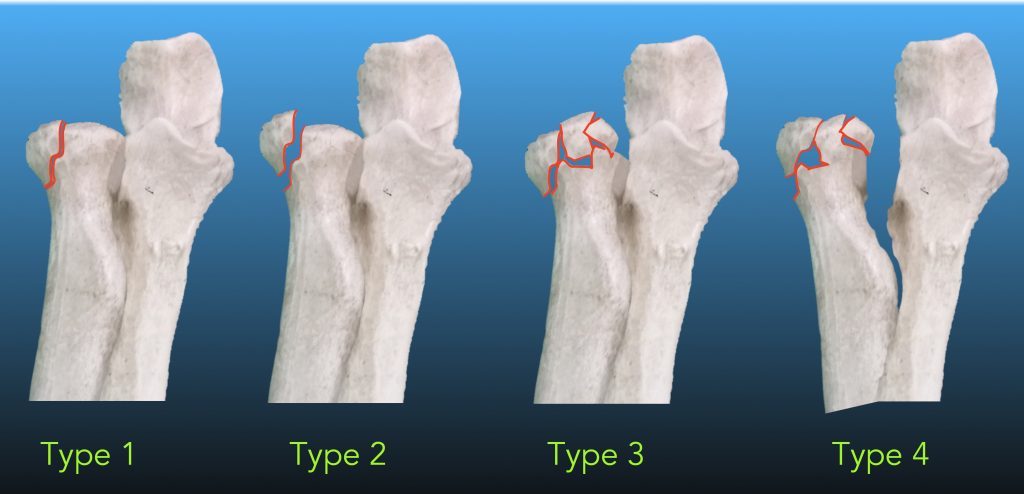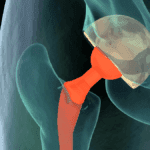What are Radial Head and Neck Fractures?
Radial head and neck fractures are the most common type of elbow fractures in adults, accounting for 33% of all elbow fractures. These fractures can happen on their own or alongside other bone, cartilage, or ligament injuries. Treatment aims to restore motion and stability to the elbow and forearm, depending on the injury’s pattern.
Understanding Elbow Anatomy and Biomechanics
- Radial Head: This part of the radius bone is entirely within the elbow joint and interacts with two main joints:
- Radiocapitellar Joint: Allows bending, straightening, and rotation of the forearm.
- Proximal Radioulnar Joint (PRUJ): Enables forearm rotation, stabilized by the annular ligament.
To avoid blocking the natural rotation of the forearm, implants used in surgery must be placed within a specific 90-degree arc known as the “safe zone,” which does not interfere with the PRUJ.
Blood Supply
The radial head has a delicate blood supply primarily from the radial recurrent artery, which provides the main blood flow within the safe zone. Additional blood supply comes from the radial and interosseous recurrent arteries.
Ligaments
- Medial Collateral Ligament (MCL): This ligament is the main stabilizer against stress on the inside of the elbow.
- Radial Head: Acts as a secondary stabilizer, maintaining up to 30% of the elbow’s resistance to stress.
Function of the Radial Head
The radial head also plays a crucial role in transmitting 60% of the load from the wrist to the elbow. This is particularly important if the interosseous membrane (a fibrous sheet connecting the radius and ulna) is disrupted, as seen in Essex-Lopresti lesions.
Causes of Radial Head Fractures
These fractures usually occur due to trauma, such as a fall on an outstretched hand. The impact drives the radial head into the capitellum (part of the humerus), causing the fracture.
Symptoms of Radial Head Fractures
- Pain and swelling in the elbow.
- Difficulty moving the elbow, especially in rotation.
- Bruising around the elbow.
- Possible nerve involvement, causing numbness or tingling.
Diagnosis
Doctors use several methods to diagnose radial head and neck fractures:
- Physical Examination: Checking the arm for additional injuries and assessing damage.
- X-rays: Standard imaging to see the bone structure and identify fractures.
- CT Scans: For detailed images, especially useful in complex fractures.
- MRI: To evaluate associated injuries like ligament tears.
Non-Surgical Treatment
In some cases, non-surgical treatment is appropriate, especially for nondisplaced fractures:
- Immobilization: Using a sling or cast for about a week.
- Rehabilitation: Starting gentle movements once the acute pain subsides.
Surgical Treatment
Open Reduction and Internal Fixation (ORIF)
This procedure involves:
- Aligning the bones and securing them with plates and screws.
- Primary Goal: Achieving stable bone healing and allowing early movement.
- Best Results: Typically seen in younger patients with stronger bones.
Radial Head Replacement
When ORIF is not viable, radial head replacement may be considered:
- Radial Head Arthroplasty: Replacing the radial head with an artificial one.
- Advantages: Provides pain relief and improves function.
- Disadvantages: Limited to cases where the radial head is severely damaged.
Pearls and Pitfalls
Indications
- A complete history and physical examination should be performed, including questions about bone density and healing tendency.
- Address associated injuries at the elbow, wrist, and shoulder.
Planning
- Consider fracture repair (osteosynthesis) when the patient has good bone quality and high functional demands.
- Have arthroplasty (joint replacement) available for older patients with low demands, with a plan to switch to this if osteosynthesis is not possible during surgery.
Exposure
- Initial protection and careful dissection of the ulnar nerve are crucial.
- If removing the triceps from its attachment (Bryan-Morrey approach), mark and reattach it anatomically.
- During a triceps-sparing approach, preserve the tendon attachment to the olecranon.
Inspection
- Thoroughly inspect the ulna and radial articular surface to consider hemiarthroplasty in younger patients.
- Observe the state of the ulnar nerve and surrounding muscles.
Bone Preparation
- Preserve intact humeral columns and their muscle attachments during total elbow replacement.
Implantation
- Ensure proper tension of the brachialis and triceps muscles.
- Use an appropriate implant for hemiarthroplasty, especially for younger, active patients.
- Avoid over- or under-sizing the joint and check with fluoroscopy after trial implantation.
Wound Closure
- Use drains as needed, and ensure proper hemostasis. Apply a moderately tight bandage for the first 12 hours to avoid hematoma formation.
Postoperative Care
- Initial Care: Use a splint to keep the elbow in full extension for the first 24-48 hours. Elevate the arm to prevent swelling.
- Medication: Avoid nonsteroidal anti-inflammatories as they can hinder healing.
- Movement: Start gentle active and passive movements after the second day post-surgery. Use a molded splint at 90 degrees flexion to protect the triceps repair.
- Rehabilitation: Gradually increase motion, aiming for more than 90 degrees of flexion after 5 weeks. Follow specific rehabilitation protocols to ensure proper healing and function.
Outcomes
Total Elbow Arthroplasty
- Studies have shown good to excellent results in older patients with comminuted distal humeral fractures.
- Patients generally achieve significant pain relief and functional improvement.
Distal Humeral Hemiarthroplasty
- Suitable for younger, active patients with complex fractures.
- Good outcomes have been reported, but the procedure is technically demanding and not widely performed.
Conclusion
Radial head and neck fractures are common and can significantly impact elbow function. Depending on the severity and complexity of the fracture, treatment may range from non-surgical approaches to surgical interventions like ORIF or radial head replacement. Careful diagnosis, planning, and postoperative care are essential to achieve the best outcomes and restore elbow function. Always follow your doctor’s advice and attend follow-up appointments to ensure the best recovery outcome.






